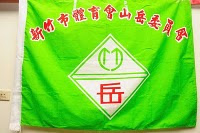C'est un parc d'attraction immense, où tous les monuments sont des reproductions récentes.
On the 2nd day, we went to the buddhist park of 牛首山, which hosts some relics of Buddha.
It is a very big attraction park, where all the monuments are built only recently.
Les constructions modernes sont plutôt jolies.
Il fait très froid, comme on peut le voir.
The buildings there are modern and very nice.
Weather is very cold, as one can see.
On dirait des champignons.
Looks like mushrooms.
Il y a même des danseuses. On a froid pour elles!
There are even dancers. We feel cold for them!
A l'intérieur, une statue de Bouddha couchée, et jeux de lumière.
Les Chinois en raffolent.
Inside, a statue of Buddha sleeping, with light show.
Chinese people love this.
Un magnifique tableau fait de plusieurs types de jade.
A beautiful painting composed by different types of jade.
Et le clou: le monument qui contient les reliques de Bouddha tout en haut.
Joli mais plutôt bling bling, sans émotion réelle.
And the highlight of the visit: the monument which holds the relics of Bouddha at the top.
Nice but quite bling bling, without real emotion.
Après ça, on va vers la vieille ville.
Les nombreuses avenues bordées de platanes centenaires font le charme de Nanjing.
After that, we go to the old city.
The many avenues bordered by century-old plane trees in Nanjing are making this city so charming.
On se dirige vers les vieux murs très bien conservés, sur une vingtaine de kms.
On entre dans la vieille ville donc.
We go towards the old walls of the city, still very well preserved over 20+ kms.
Entering the old city then.
La célèbre porte de 中華門, par où les Japonais ont envahi Nanjing en 1937 et commencé le "massacre de Nanjing", où périrent 30000 Chinois.
The famous gate of 中華門, where the Japanese entered the city in 1937 and started the "massacre of Nanjing", where 30000 Chinese were murdered.
Le quartier de 老門東 dans la vieille ville.
The area of 老門東 in old town.
Le quartier est constitué de vieilles maisons, beaucoup re-construites en fait, et converties en restos, magasins, etc...
The area is made of old-style houses, many of them actually rebuilt, being now restaurants, shops, etc...
Le Starbuck du coin.
The Starbuck local style.
Cliff et son signe astrologique Chinois du Lapin.
Cliff and his Chinese zodiac sign of the Rabbit.
Moi, c'est la Chèvre.
Me, it is the Goat.
Juste dehors le quartier touristique, les maisons re-deviennent modernes et habitées par les locaux.
Just outside the touristic area, houses are typical modern again, with locals.
Un spectacle typique des vélos partagés. A Nanjing, ils sont plutôt bien rangés dans leur espace spécial.
A typical scene of bicycle-sharing. Orderly parked in their reserved space in Nanjing.
Et la mobylette électrique omni-présente avec cape anti-vent.
Il y en a partout ici.
And the omninous electric motorbike with windproof cape.
They are everywhere.

































































